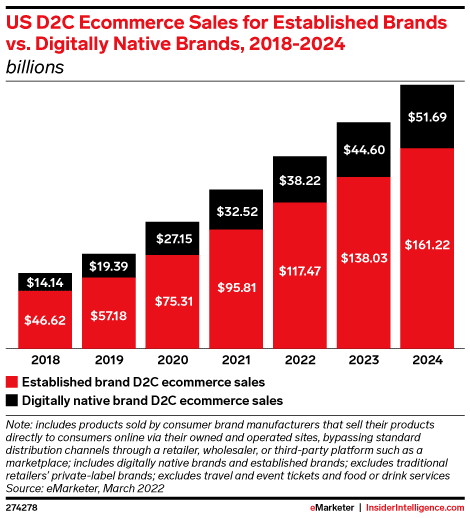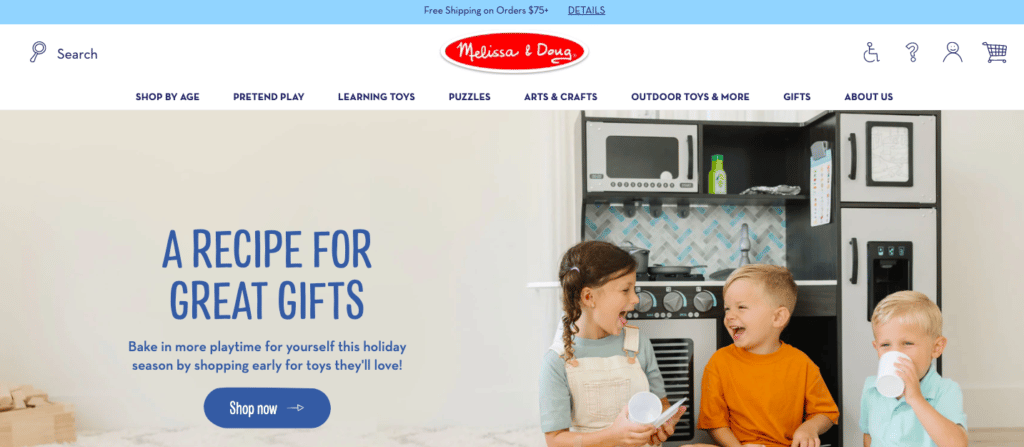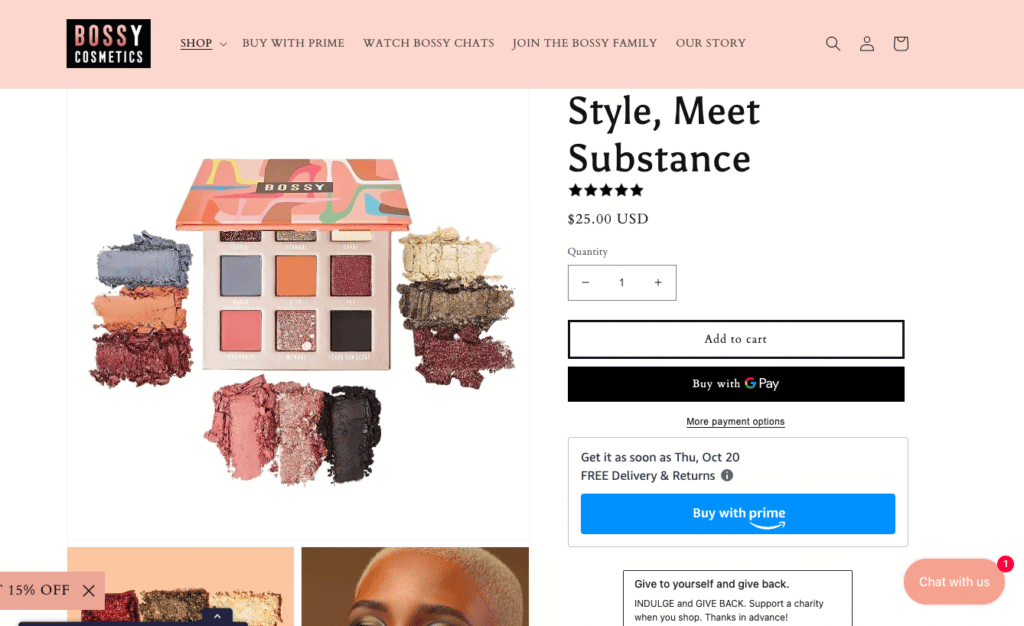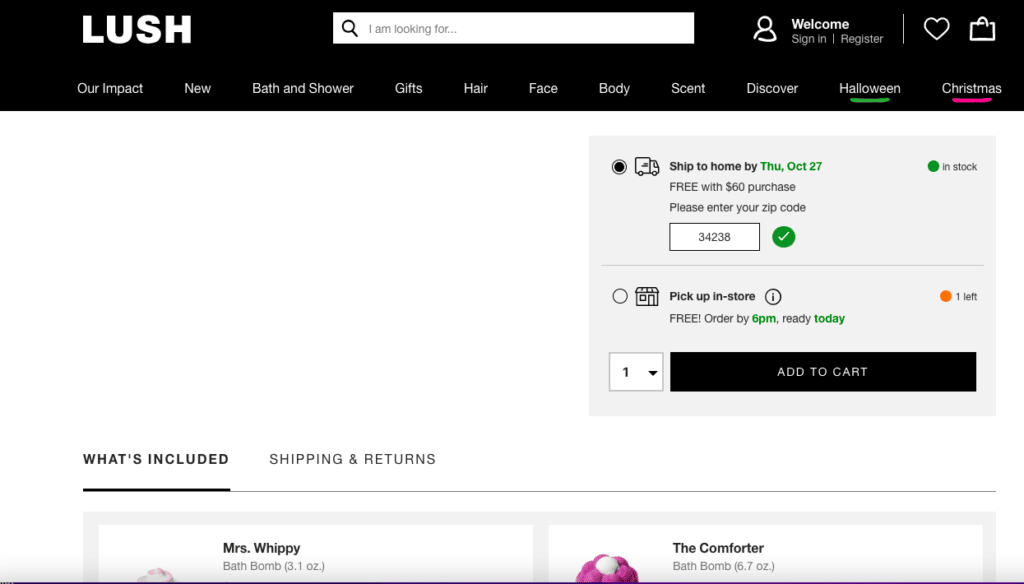The Direct-to-Consumer Brand’s Guide to Holiday 2022

Is it just us, or does each year seem to fly by faster than the one before it?
October is already halfway over. And that means the holiday shopping season will be well underway before we know it.
What can direct-to-consumer (DTC) brands expect this holiday season? And what last minute preparations can you take to ensure your brand is positioned for a happy holiday season (it’s not too late!)? Let’s explore.
What DTC Brands Can Expect This Holiday Season
In the past couple years, we’ve seen a huge shift in holiday shopping behavior, largely driven by the pandemic. During the 2020 and 2021 holiday shopping seasons, many consumers opted to shop from the comfort of home – rather than braving in-store crowds. And many started their shopping early, driven by supply chain concerns.
Now, it’s been nearly three years since COVID-19 was declared a global pandemic. Yet, holiday shopping will probably never look like it did pre-pandemic.
Here are five trends DTC brands can expect this holiday season.
1. Overall Holiday Retail Sales Will be Flat
Inflation continues to grow. And there are talks of a recession on the horizon. So it’s probably not surprising that consumers will be watching what they spend this holiday season.
The result? Relatively flat overall holiday retail sales. Deloitte predicts holiday retail sales will increase between 4% and 6% this holiday shopping season. In comparison, holiday sales grew by 15.1% last year.
2. Holiday Ecommerce Will Continue to Grow
During the height of the pandemic, more consumers started to embrace the convenience of online holiday shopping. It seems this is a habit that’s going to stick.
Deloitte predicts eCommerce sales will grow by 12.8%-14.3% this holiday season.
3. More Dollars will go to DTC Brands

eMarketer predicts the growth of DTC will only continue.
Increasingly, consumers are showing a willingness to buy directly from brands. This includes established brands that have traditionally sold through retailers (think Nike), as well as digitally-native brands (think Warby Parker and Glossier).
In fact, according to Invesp, over a third of consumers have bought directly from a manufacturer’s website in the last year. What’s more, according to SAP, DTC eCommerce sales in the US grew over 45% last year – and accounted for 14% of total retail eCommerce sales.
With the right strategy in place, DTC brands have a big opportunity to win a larger piece of the holiday shopping pie this year.
4. Consumers are Getting an Earlier Start
In the past, the holiday shopping season kicked off on Black Friday. But that’s no longer the case.
Events like Prime Day, Target Deal Days, and Walmart’s Deals for Days – combined with other factors including inflation and supply chain concerns – are pushing consumers to start their holiday shopping earlier and earlier.
As such, DTC brands must have their holiday strategies nailed down earlier. In fact, Gartner recommends brands adopt an “always-on” approach to holiday shopping. This might include tactics such as creating an omnichannel “gifting” category that’s available year-round. Or, adding wish list capabilities to your dot com. An always-on strategy can help you reach those early holiday shoppers – as well as people celebrating multicultural holidays throughout the year.

5. Shoppers Have High Expectations
Shoppers have always had high expectations. This is nothing new. And holidays will be no exception.
Of course, there are myriad factors consumers consider when making a purchase decision. But according to Gartner, these are the three top factors that’ll impact holiday shoppers’ gift decisions this year:
- Price (65%)
- Value (53%)
- Free shipping (51%)
DTC brands must be sure to highlight these factors on their product pages and throughout their holiday promotions.
The 2022 Holiday Shopping Season Will Present Both Challenges and Opportunities for DTC Brands
Sure, overall holiday sales are expected to be flat. But expected growth in eCommerce – and more consumers purchasing directly from brands – is good news for customer-centric DTC brands.
Though it’s not even Halloween, many consumers have already started their holiday shopping. So by now, you should already have your holiday strategy locked down.
However, there are still some simple actions you can take today to set your brand up for a more successful holiday shopping season.
Last Minute Opportunity #1: Add a New Payment Option to Boost Conversion
Shoppers abandon their carts for any number of reasons. But research from Baymard found that oftentimes, abandonment is the result of a clunky checkout process.
Any time there’s friction during checkout, there’s a good chance the shopper will jump ship. So now’s the time to look for simple ways to streamline your checkout process.
There are different factors that can create conversion-killing friction during checkout. For example, if a website requires registration before checkout, it’s going to negatively impact conversion.
Another thing that causes friction? When a shopper has to walk to another room to look for their credit card to finalize a purchase.
One simple (but powerful) way to combat this friction during the holiday season (and beyond) is to add more payment options to your website – such as Buy with Prime. Here’s how it works.
Let’s say a consumer is browsing for a gift for a friend who loves beauty products. They happen upon this product page for an eye shadow palette. The product has great ratings and reviews – and looks like a great gift. They scroll to add the item to their cart, and see a blue button that says “Buy with Prime.” They also see when they can expect the item – as well as the fact that this payment method offers free shipping.

The customer clicks through and is taken to an Amazon login screen. Once they log in, their default shipping and payment form (pulled from their Amazon Prime account) is displayed. They can keep the information as is – or select a different shipping address and payment form. Then, they click “Place Order” – and can check another person off their holiday shopping list.
The holiday shopper experiences an easy, friction-free checkout and payment process – no need to hunt down their credit card. And the brand earns another holiday sale.
After the transaction goes through, the holiday shopper receives shipping and delivery notifications – just like they would if they purchased the item directly on Amazon.
Getting started with Buy with Prime is Easy. And as the first Buy with Prime partner, 1440 would love to help you up and running in time for the busy holiday season. Right now, the program is open exclusively to brands using the Fulfillment by Amazon (FBA) feature. If you are, fill out the quick form on this page to get started.
Last Minute Opportunity #2: Simplify Your Holiday Shipping Strategy
Sure, some consumers have already started (or even finished) their holiday shopping. But there are others who will wait until Black Friday – or even later.
No matter when they opt to shop, they have high expectations. For starters, they want shipping to be free. As we mentioned earlier, Gartner found that free shipping is one of the top factors that’ll impact holiday purchase decisions this year.
In addition, they want shipments to be fast. When choosing free shipping, a staggering 62% of consumers expect their shipments to arrive in less than three business days.
And finally, consumers want to know the status of their shipments in real-time.
Brands must make it crystal clear when consumers can expect their orders. In fact, this information should ideally display on the product page – before the shopper even adds the item to their cart.

And, they must have a strong strategy in place to ensure they meet these promises.
Sounds simple, right? Oftentimes, it’s not. In fact, a survey from Shippo found that 23% of brands aren’t confident in their current shipping operations and strategy.
In order to meet delivery promises – while preserving profits – many brands waste time keying shipment information into several different shipping platforms. This isn’t a great use of time – especially during the busy holiday season.
You can eliminate this manual process with Shipping Studio from 1440. With Shipping Studio, you can key in your customer’s details one time – and see rates across all of your shipping accounts. That way, you can meet your holiday shoppers’ shipping expectations – without wasting time or money doing it.
Then, with Commerce Studio and OMS Studio, you can be sure your customers always know the status of their shipments – during the holidays and beyond.
Get Your DTC Brand for a Happy Holiday Season
Ready or not, the holidays will be here soon. And this year’s holiday shopping season will present some big opportunities for DTC brands that are well-prepared.
By now, your holiday strategy should be nailed down. But with the two simple, last-minute actions we explored in this blog, you’ll set yourself up for an even happier holiday season.